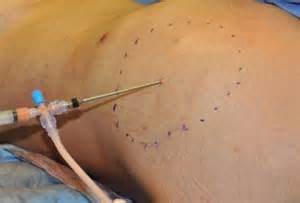
One fat graft preparation method that has been looked at over the years is the addition of a ‘priming’ or stimulating agent. The objective is to either improve how many of the intact transplanted fat cells will survive or increase conversion of the coincidental stem cells that are known to exist in fat to become new lipid-laden fat cells. Done years ago by mixing in insulin, today’s potential fat graft stimulator is platelet-rich plasma. (PRP) High concentrations of platelets would theoretically have a favorable effect on both adipocytes and stem cells.

Like any drug, the effects of PRP on fat would be expected to be dose dependent. Given that the average PRP volume extracted from a 20 to 60cc blood draw would be just a few ccs, its addition for example to a BBL (Brazilian Butt Lift) would be expected to have no effect on fat graft survival. In facial fat grafting, however, where graft volumes could be expected to be between one and 50ccs, a few ccs of PRP would be more likely to be effective. Thus it likely all comes down to an expected concentration effect.
No one yet knows what the ratio of PRP to fat graft volume should be or would be expected to work. I currently operate on the theory that PRP should be used when the fat graft to PRP ratio is at least 10:1 or a 10% PRP composition volumetric ratio. Studies have shown that PRP may have its strongest effect on the differentiation of adipocyte-derived stem cells into fat cells. This may make the greatest contribution to final graft volume persistence. While vascular budding or endothelial sprouting may have a more minor effect.
The use of PRP in fat grafting (lipofilling) remains more theoretical than proven science. But the lack of any side effects with PRP allows for the its liberal clinical use and investigation.
Dr. Barry Eppley
Indianapolis, Indiana


